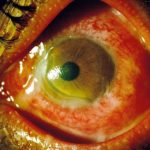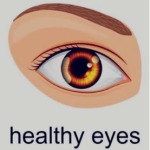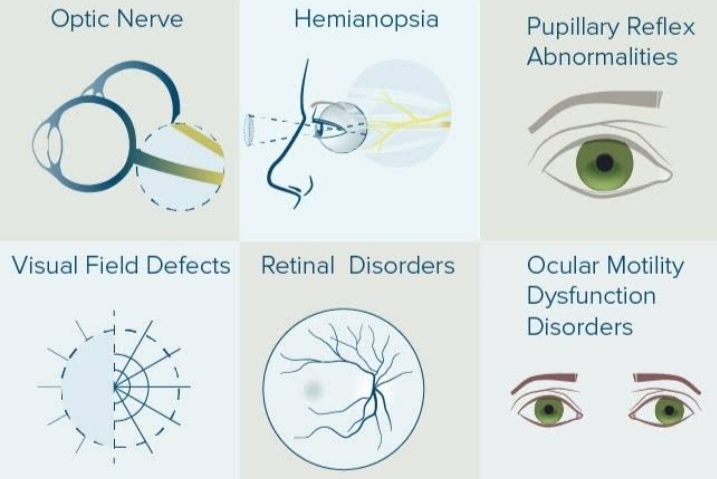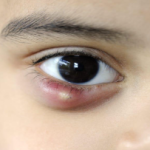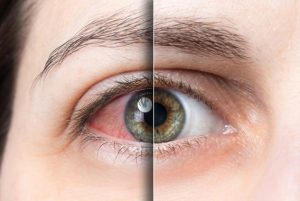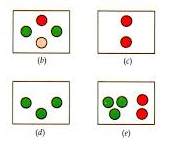Blepharitis is a subacute or chronic inflammations of the lid margins. It is an extremely common disease which can be divided into following clinical types- squamous blepharitis , bacterial blepharitis , staphylococcal blepharitis , posterior blepharitis and parasitic blepharitis.
Bacterial blepharitis :- Bacterial blepharitis , also known as chronic anterior blepharitis or staphylococcal blepharitis , is a chronic infection of the anterior part of the lid margin. It is a common cause of ocular discomfort and irritation. This disorder usually starts in childhood. This type of
blepharitis commonly involved Staphylococci , streptococci, moraxella etc may be involved.
Signs and symptoms :- Irritation, itching , lacrimation , photophobia , yellow crusts are seen at the root of cilia , small ulcers may be seen, mild papillary conjunctivitis may be seen .
Complications :- madarosis, trichiasis, poliosis, tylosis, epiphora, eczema of skin and ectropion ,recurrent styes, marginal keratitis ,tear film instability and dry eye may seen.
Treatment :-
Antibiotic treatment mostly preferred such as anti biotic eyedrops should be used 3-4 times, oral antibiotics may be used , eye ointment should be applied at night time in lid margin.
Squamous Blepharitis :- Squamous blepharitis is primarily anterior blepharitis . It is usually associated with seborrhoea of scalp in its
gland of zeiss effect by Corynebacterium acne.
Signs and symptoms :- deposition of white material at the lid margin, mild discomfort , irritation, watering , falling of eyelashes , lid margin is thickened , lashes fall out easily , white dandruff like scales is seen in the lid margin .
Treatment :- Improvement of balance and healthy diet , clean of scalp and eyelashes daily with lukewarm water mix with baby shampoo , steroid eye ointment can be used, Antibiotics eye ointment can be use at night time , antibiotic eyedrop can be uses
3-4 times daily .
Posterior blepharitis :- Posterior blepharitis also known as meibomitis , it is an inflammation of chronic and acute forms .
Chronic meibomitis :- Chronic meibomitis is a commonly occurring meibomian gland dysfunction , it can see more in
middle aged persons , especially those patients with acne rosacea or seborrhoeic dermatitis .
Signs and symptoms :- chronic irritation , burning , itching , grittiness, mild lacrimation , white frothy secretions are frequently seen on the eyelid margin and canthi , opening of meibomian glands become prominent with thick secretions which can be expressed out by pressure on the lids. Vertical yellowish streaks shining through conjunctiva , hyperaemia of posterior lid margin around the orifices of meibomian glands can be seen frequently , Oily and foamy tear film with accumulation of froth on the lid margins or inner canthus , secondary changes in the form of papillary conjunctivitis and inferior corneal punctate epithelial erosions may be seen
Acute Meibomitis :- Acute meibomitis occurs due to staphylococcal infection . It is characterized by painful swelling around the involved gland . Pressure on it results in expression of pus head.
Treatments :- Lid hygiene must be recommended , it can be include such as warm compress , vertical messages of lids in the form of milking . Topical antibiotics in the from of eye ointment should be rubbed at the lid margin immediately after massage , eye drops may be used 3-4 times a day ,ocular lubricants such as artificial tear drops are required for associated tear film instability and dry eye disease, Topical steroid may be required in patients with papillary conjunctivitis .
Parasitic Blepharitis :- In this blepharitis associated with infestation of lashes by lice is not uncommon in persons living in poor hygienic
conditions. Phthiriasis palpebrarum refers to the infestation by phthirus pubis, commonly seen in adults in whom it is usually as a sexually transmitted infection . Pediculosis refers to the infestation by pediculus humanus corposis or capitis . Demodex blepharitis is caused by two distinct species such as demodex folliculorum which causes anterior blepharitis and demodex brevis which causes
posterior blepharitis.
Symptoms and signs :- chronic irritation , itching , burning and mild lacrimation , Lid margins are red and inflamed , Lice anchoring the lashes with their claws must be seen on slit lamp examination , Eggs may be seen as opalescent pearls adherent to the base of cilia , conjunctival congestion and follicles may be seen in long standing cases.
Treatment :- mechanical removal of the lices and nits with forceps . Application of antibiotic ointment and yellow mercuric oxide uses to the lid margins and lashes , Informed the patient and patient family member to continue clean the patient clothes and patient bedding to prevent recurrences.


